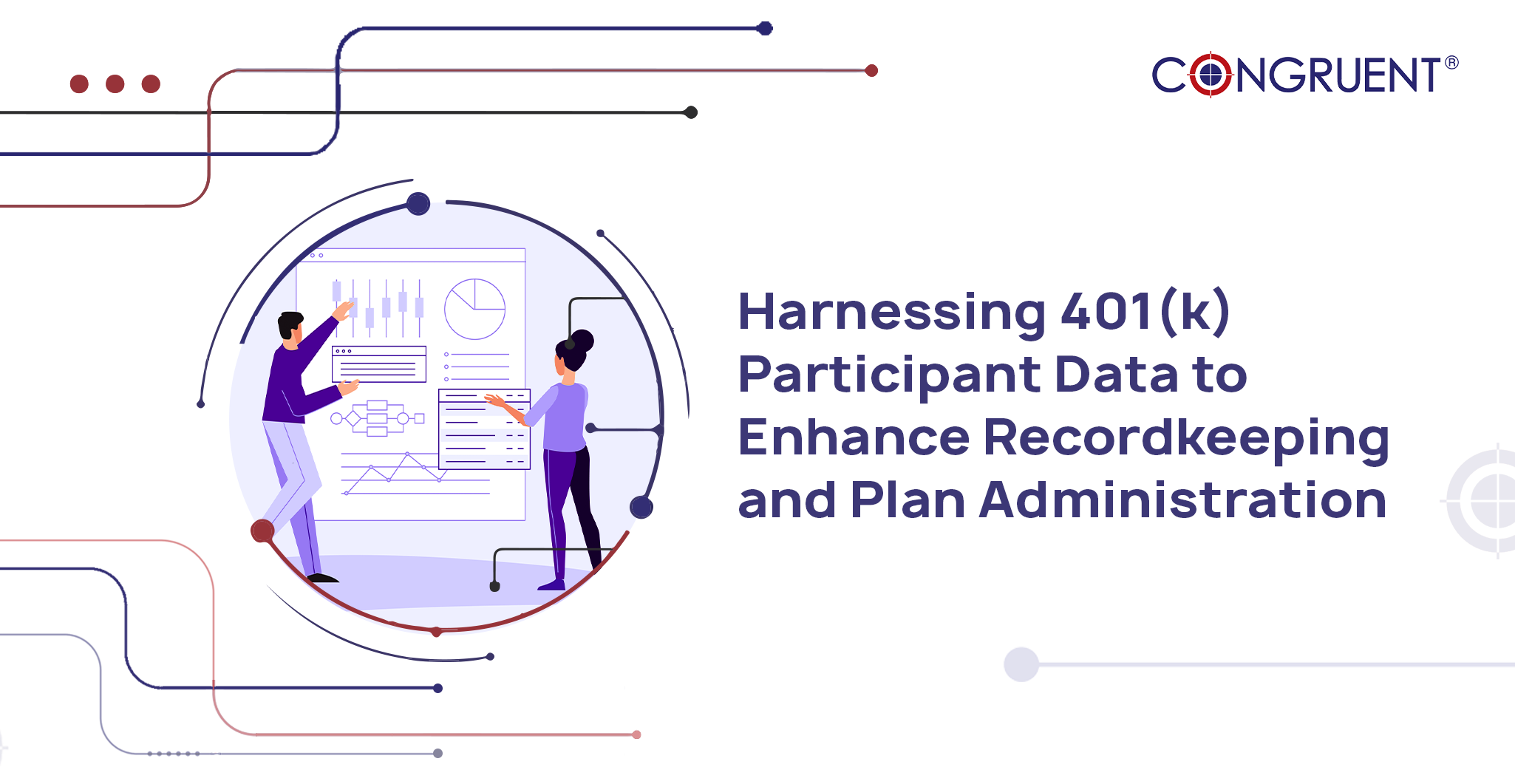
Data plays an increasingly significant role in the evolving US retirement plan landscape. For 401(k) plans, the participant-level data collected can be used to optimize recordkeeping processes and plan administration.
By intelligently harnessing the data, retirement plan advisors have the potential to make a significant impact on the success of their client’s retirement plans. The effective use of data can help the retirement plan industry reduce costs, improve plan health and performance, and ensure compliance.
Let’s look at how participant data can be used to optimize the recordkeeping and retirement plan administration process.
The importance of participant data
Accurate participant data is a valuable strategic asset for recordkeepers and retirement plan administrators. It allows them to develop comprehensive participant profiles and strategize how to serve them well. In addition, the data provide insight into how participants engage with their plan accounts.
For instance, automatic enrollment programs collect information regarding employee contributions so employers can assess whether or not individuals are participating in the plan at sufficient levels for retirement readiness. Additionally, the data can be used to inform communication strategies and provide insight into the design of plan investments and overall plan performance tracking.
The key is leveraging their data collection capabilities to provide more comprehensive participant services and support. It enables recordkeepers and retirement plan administrators to understand better how their participants engage with their plans, allowing them to make the necessary adjustments to maximize outcomes.
Data collection is also crucial for regulatory compliance purposes. Retirement plan administrators are subject to strict federal regulations regarding participant information privacy and data collection accuracy. In addition, recordkeepers must maintain the participant data over the life of a plan. Thus, they must take the necessary steps to ensure accurate data collection and secure data storage processes are in place.
Challenges in analyzing 401(k) data and mitigation strategies
Despite the wealth of information at their fingertips, recordkeepers and administrators often face challenges when analyzing 401(k) participant data. Some common issues include:
- Ensuring data accuracy and completeness
- Adhering to strict privacy regulations and maintaining participant trust
- Gleaning actionable insights from a sea of available data
To overcome these challenges, retirement plan service providers can employ the following strategies:
- Validate and clean data regularly to ensure accuracy and completeness.
- Implement strict access controls and encryption methods to safeguard sensitive participant data.
- Ensure compliance with established regulations, such as the Employee Retirement Income Security Act (ERISA).
By employing these strategies and leveraging advanced AI-powered analytic tools, retirement plan service providers can better understand their 401(k) participants’ data and make more informed decisions. In doing so, they will be better equipped to serve their clients—and ensure the success of their retirement plans.
Diving into the technicalities of data analytics
Data analytics techniques can help administrators quickly identify patterns and opportunities, even when working with large and complex data sets.
Examples of these techniques include:
- Segmentation: Group participants based on shared characteristics, such as age, income, or risk tolerance, to tailor plan offerings and optimize engagement.
- Predictive analytics: Employ statistical models to forecast future participant behavior, such as propensity to save, likelihood to roll over, or attrition risk.
- Machine learning: Applying ML algorithms to large amounts of data to learn more about the participant’s behavior. These tools can help administrators uncover hidden connections within their data to support informed and proactive decision-making for their plans.
- Text mining: Utilizing Natural Language Processing (NLP) to analyze qualitative feedback provided by participants and uncover underlying sentiment.
